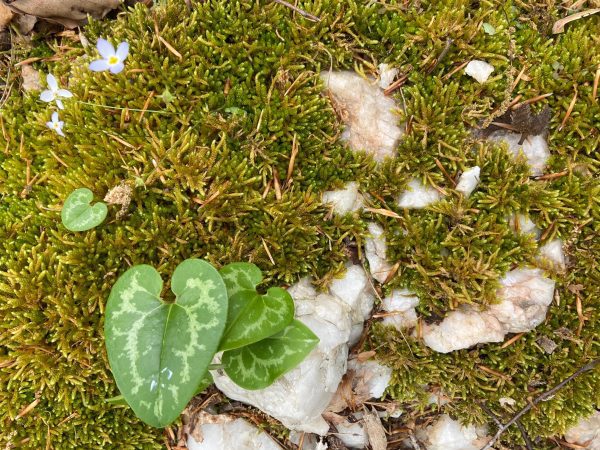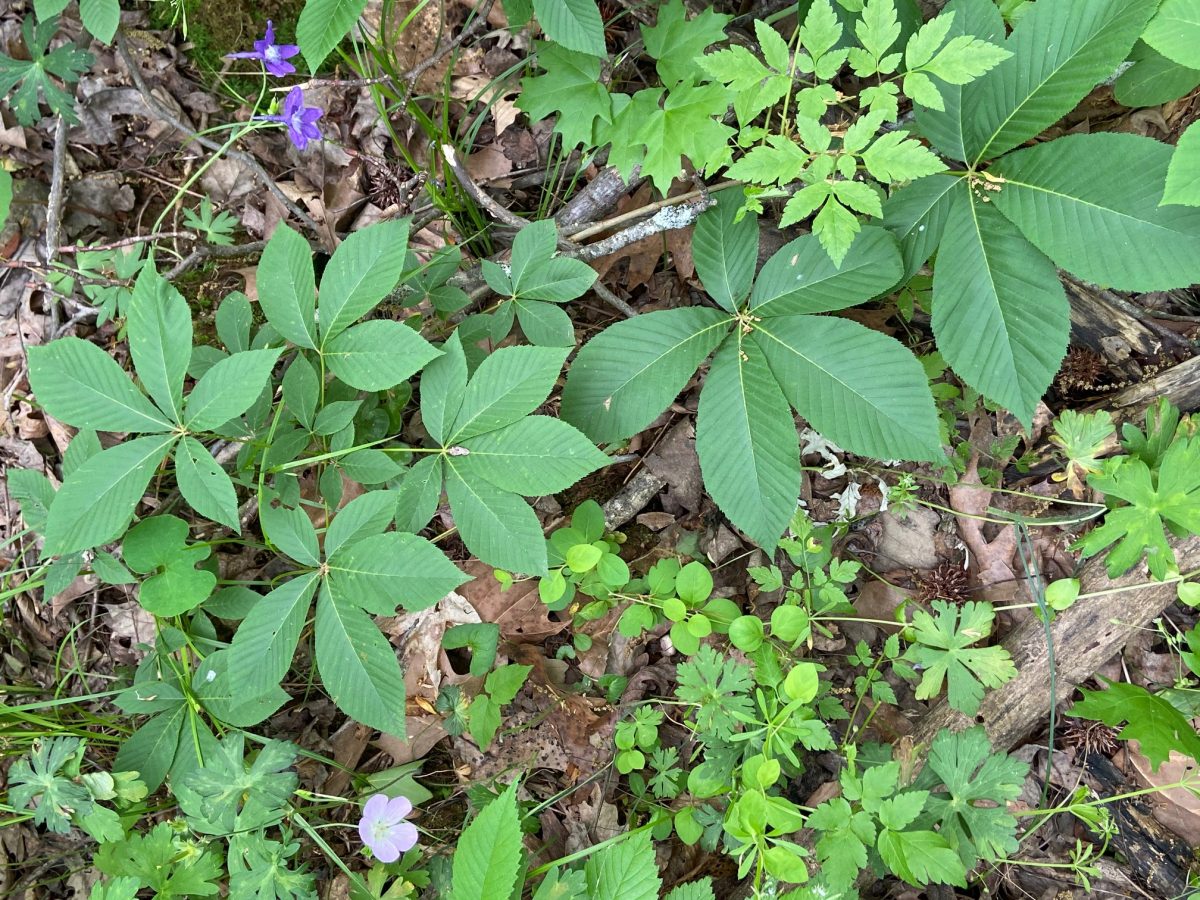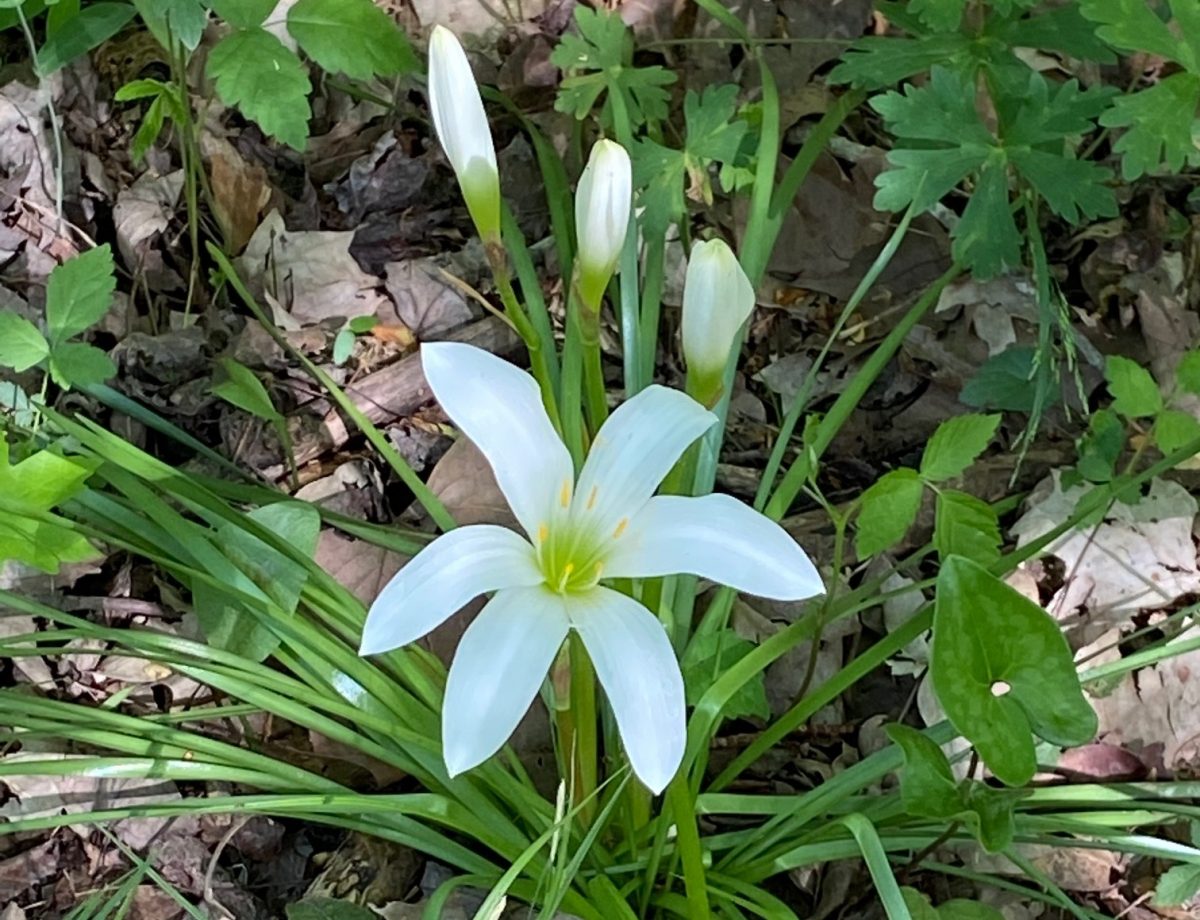Overcoming plant blindness: Seeing the extraordinary in the common

For a lay naturalist, springtime in the Uwharries can be exhausting. There’s a sense of urgency this time of year – the migrating birds and spring ephemerals come and go in a matter of weeks. I’ve resorted to multi-tasking. I’ve given up binoculars in favor of birding by ear. This allows me to identify the black and white warbler by its squeaky-wheel song as I search for wildflowers along a path through the bottomland forest.
I’m always looking for something rare, but I also marvel when common species come together in artful arrangements of color, texture and form. I recently stopped to ooh and ahh over a Zen-like composition of flint rock, moss, heartleaf and bluets.
Even distant hillsides demand attention. Before the foliage settles into summer’s static mass, it begs me to consider just how many shades of green occur in the universe and whether they all have names.
[Read all of our coronavirus-related stories here]
These days, when I find myself fretting over every little cough or ache or sniffle, at least I can be certain I don’t suffer from the affliction known as plant blindness. This malady was first described by botanists Elisabeth Schussler and James Wandersee as “the inability to see or notice the plants in one’s own environment.”
It seems humans are hard-wired to overlook plant diversity. Our brains like to categorize the vast amounts of information we’re constantly processing, so plants tend to get lumped together into a single basket. Our lizard brain doesn’t pay much attention to plants since they aren’t seen as predators. In general, we feel a closer kinship to animals, especially those with human features. That’s why it’s easier for find support for conservation efforts aimed at “charismatic megafauna.”
Apes resonate more than endangered snails.

Painted buckeye, wild geranium and dwarf larkspur. Photo: Ruth Ann Grissom.
That said, our subsistence ancestors benefitted from knowing which plants were edible and which were toxic. And healers once relied on herbal medicines to promote health and combat illness. Today, scientists are still searching for plant extracts to fight diseases like cancer. One of the best-known examples is Tamoxifen, which is made from the bark of the Pacific yew tree. So there’s a self-serving aspect to understanding plants. We ignore them at our own peril. Our ignorance can also jeopardize the health of entire ecosystems.
I was a birder long before I became a gardener. I put up feeders in my yard, but I didn’t see much difference between a Chinese and an American holly. Both provided year-round cover and seasonal berries. Aesthetics aside, why not choose one of the widely-available and fast-growing Chinese varieties such as the popular Burford?
Doug Tallamy answered that question in his book Bringing Nature Home. An entomologist, he explained how native plants support the insects needed for birds to feed their chicks, even those that visit our feeders for sunflower seeds as adults.
It’s hard to make the case for replacing non-native, often invasive, species – as we’re doing on our land in the Uwharries and in my neighborhood park in Charlotte – if people don’t see the difference. If they look at the tangle of invasive vegetation along a greenway in Mecklenburg County, they see it as equivalent to the native diversity along a pristine stretch of Barnes Creek in the Uwharrie National Forest.

Atamasco lilies thrive in the bottomland forest. Ruth Ann Grissom
Overcoming plant blindness calls on the higher levels of cognition found only in our primate brains, the very things that make us human – the ability to create and appreciate art and the capacity for empathy, toward other species as well as our own.
Some of my early experiences no doubt opened my eyes to plants. I credit my parents for taking me and my sister on walks through the woods. I have vivid memories of scratching the leaf litter around wild ginger in search of the bizarre blooms we called little pigs or little jugs. I also appreciate Mrs. Koch, who had our 10th grade biology class build a nature trail on the West Montgomery campus. We hacked a path through the woods and painted signs to identify notable species of trees and shrubs. It was a welcome diversion from classroom work, and it left a lasting impression.
It’s hard to find a silver lining to coronavirus when so many people are suffering – physically, financially and emotionally – but it might be an antidote to plant blindness. Being forced to stay at home could give people the time and mental space to consider the diversity and provenance of plants in our own backyards, whether that’s a quarter-acre lot in the suburbs or a sprawling national forest.